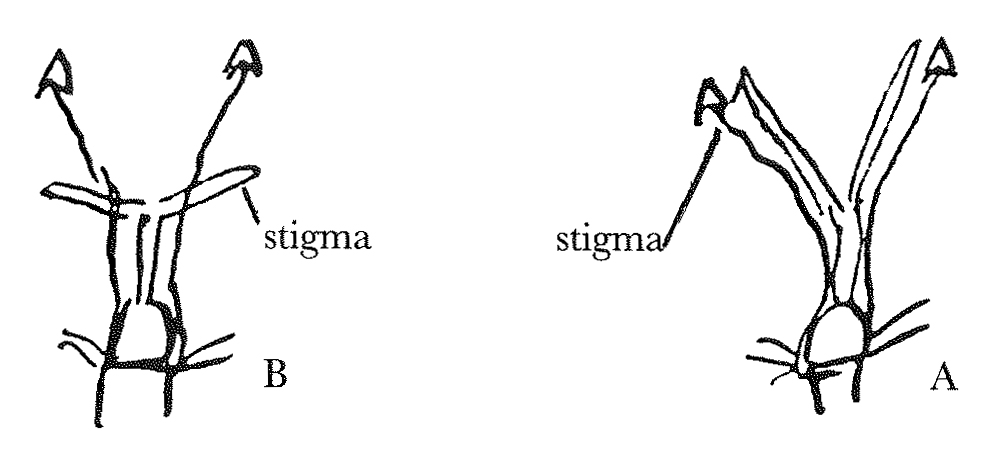My dear Gray
In the whirl of your public affairs, science may be forgotten, or if not forgotten you may have no inclination to write. But if so inclined I shd. be very glad to have a little information on any cases of dimorphism, like that of Primula, & to be allowed to quote you.—2 To make sure that you may understand what I want to know: I give this beautiful diagram of the two forms of Primula.

I think I have made out their good or meaning clearly. The pollen of A is fitted for stigma of B & conversely. The individuals are divided into two sets or bodies, like the males & females of Quadruped; but both in Primula are hermaphrodites: but I will not enter on details, as I will soon send a paper to Linn. Soc.y.—3 I should be eminently glad to know of other analogous cases. Are the two forms ever borne on same plant? Thyme is a different case: as the one form is simply female, stamens having aborted; these females, however, I find to be the most productive of seed.4 Some of the species of Linum offer this case:

I am rather too late to experiment fairly; but I am almost sure that pollen of A is absolutely sterile on stigma of A: but good for stigma of B: whereas pollen of B is good for its own stigma B & for stigma of A.—5
This subject interests me much, so do help me if you can; for I have some very faint hopes that it may throw some light on Hybridisation;6 I have sown seeds of Primulas raised in very scanty numbers from stigmas fertilised by what I call a homomorphous union; ie by pollen from plant of same form.—
If you have looked at Spiranthes let me hear:7 but if your Spiranthes are like S. speciosa figured by Bauer:8 they are very different from our S. autumnalis; which by the way at Torquay I had the good luck to see Bees fertilise: I have almost finished my long Orchis paper,9 & then I must go back to my true work on Cocks & Hens, fowls & rabbits.10 Eheu Eheu, what much better fun observing is than writing.
By the way I have just been amusing myself in looking at Dionæa in aid of my Drosera work. How curious it is to see a fly caught & how beautiful are the adaptations compared with Drosera. But I must not run on about my hobby Horses.
Farewell | My dear Gray | Yours very sincerely | Charles Darwin
Manuscript Alterations and Comments
Please cite as “DCP-LETT-3255,” in Ɛpsilon: The Charles Darwin Collection accessed on